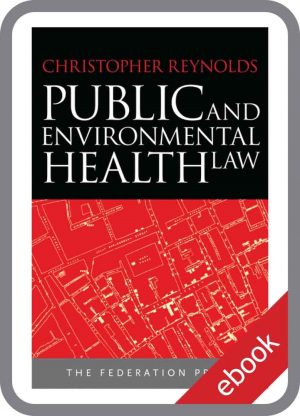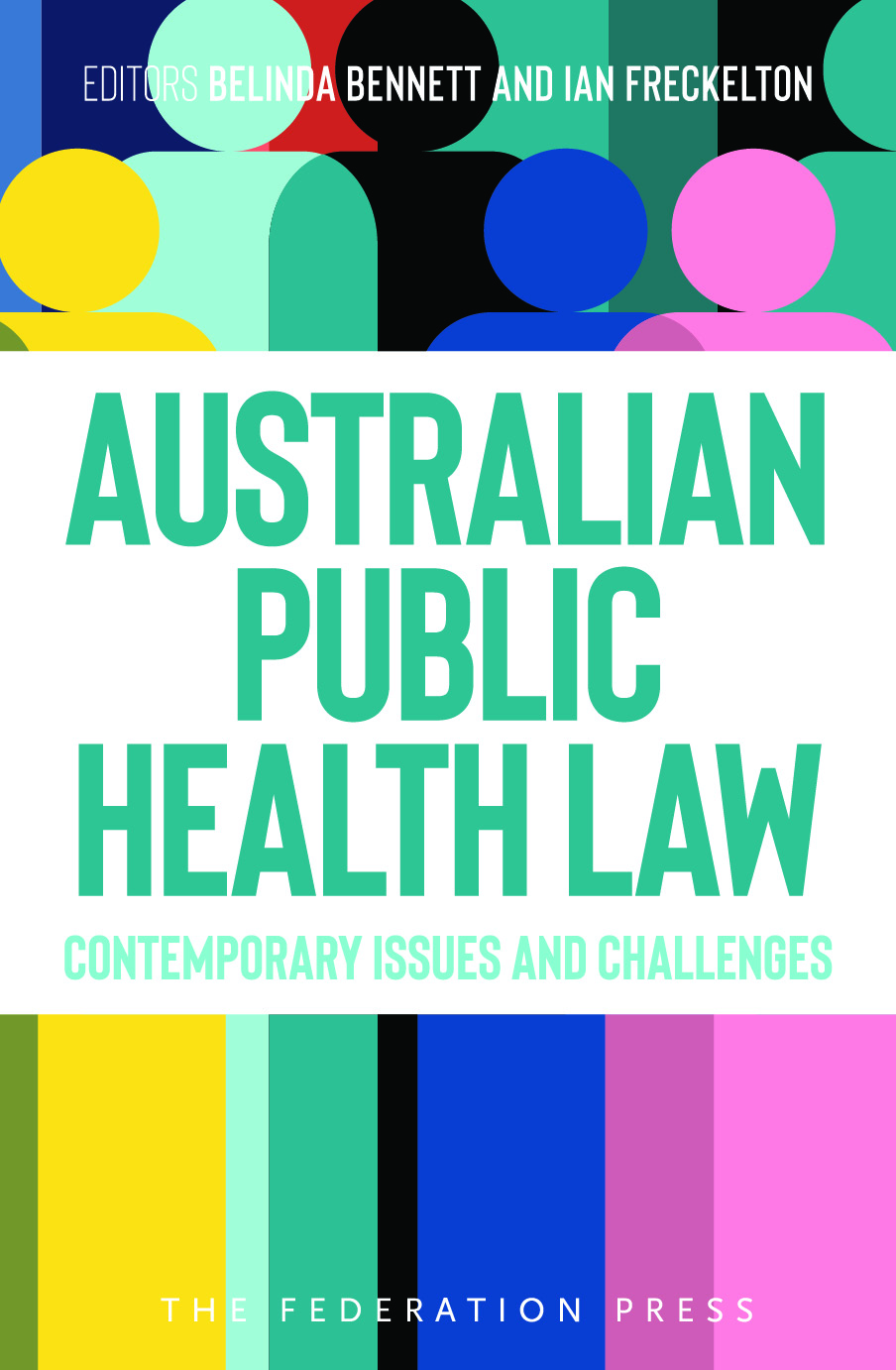Public and Environmental Health Law is a successor to Public Health Law and Regulation 2nd edition and offers a critical and up to date assessment of the legislation, cases and policies that impact on public health practice in Australia and New Zealand.
As with earlier editions, this book outlines and discusses laws in a range of important areas including environmental health, food safety, communicable disease, obesity, tobacco and alcohol, the human health impacts of pollution control and planning law. Particular focus is given to new directions in public and environmental health law including the “risk based” approaches reflected in recent legislation and statutory duties to protect public health. New issues are also raised and discussed, including sustainability, the challenges of climate change, preparedness for pandemics and other public health emergencies and health impact assessment.
Introductory chapters set public and environmental health law in the context of the wider legal system and discuss issues such as its constitutional structure, international trends and obligations, “rights” questions including natural justice and the proper exercise of statutory power by officers. The principles of legislation and its interpretation and the laws of evidence, with a particular focus on the use of epidemiological data as evidence, are also examined.
Public and Environmental Health Law is designed for students of environmental health and public health, for environmental health officers, medical officers and others working in the field and for all persons interested in the potential for law and legislation to further the practice of public health. It is written in a way that highlights the potential for law to act strategically, as a tool for improving public health outcomes, is extensively referenced to statutes and cases and is accompanied by a detailed bibliography.
Public Health Law: Context and TensionsThe Governance of Public HealthCourts and EvidenceStatutory Power, Procedural Fairness and Legal LiabilityThe Scope and Theory of RegulationEnvironmental Health: The Public Health ActsEnvironmental Health and Environmental ProtectionFuture Directions for Public Health LawLand Use Planning and Public HealthInfectious Disease, Emergencies and PandemicsFood LawLaw and the Diseases of Lifestyle: Tobacco, Alcohol and ObesitySelect Bibliography
Index
The work is a very comprehensive presentation of a wide array of topics integral to Australasian Public and Environmental Health Law.
Phillip Pawson, Law Society of Tasmania, Law Letter, Summer 2011
Reviews of previous editions:
Public Health Law and Regulation … provides a comprehensive overview of past, present and future issues for Australian public health law …
To help illustrate many of the legal issues and concepts, a large number of excellent examples and case studies are provided throughout the text. Many of these are related to environmental health issues, for example, tobacco control, food safety and HACCP, environmental protection standards and ISO 14000, planning laws, and legal issues for the investigation of a Legionella outbreak. As each of the chapters present various perspectives on public health law, many of the topics illustrated through the examples are discussed from a range of perspectives throughout the text. This technique is particularly insightful and is most beneficial to the reader. … This text presents what can be very detailed information in a very readable but thoughtful manner, and provides much food-for-thought in regard to future public health issues that will need to be addressed through legislation. As such this text will be of great benefit to students and practitioners.
Environmental Health, 2004
A timely text of 307 pages. Predominantly a student text, it also provides guidance for practitioners in this increasingly complex and emerging area of cross-jurisdictional law. Probably the first of many editions. …
The text is engagingly and clearly written. Chapter 2 entitled, “The tools for regulation: Parliament, courts and administration” is an example. The area traversed is vast. Beginning with a thumbnail comparison of our system of government with other first world countries, an explanation of what responsible government is and the rule of law within that expectation.…
Ambitious in its scope the chapter also spends three well written pages under the heading “Proving Facts in Court – the laws of evidence”, which may be a present help for those of us who from time to time have to explain to our clients why it is what they know is not that which can be proven. But the chapter goes further and is of use to the practitioner in the foot noting of the general propositions set out under broad headings which cover the range from the source of powers to the appeal from decisions.
There are distinct chapters on the “Risk based approach to regulation”, “Environmental health and the health of the environment”, “Food Law”, Communicable Disease” and “Drugs”. The analysis of the health risks posed by illicit drugs as against tobacco and alcohol should be sent to every politician (tobacco related deaths, 82%, alcohol 14%, illicit 4%). …
As a student’s text it is cross disciplinarily educative. …
As a practitioner’s text this is a good beginning. It is well footnoted and indexed. It provides a conceptual framework for this developing area of law, perhaps as tort once did for the varying actions on the case. If the authors are right this may be what we are seeing develop. “Nuisance” they write, “has been described by the torts lawyer John Fleming as ‘the law’s contribution to the environment’… “. The bringing together of the disparate themes under the umbrella of public health law may be recognising a new cause of action, an obligation imposed not to so conduct affairs as to expose persons to the risk of ill health. I don’t think they say this anywhere, but by the third edition they probably will.
In short a very good introduction to the expectations of a modern society toward protecting its health, the power of government to regulate and the courts to enforce those obligations created.
Tasmanian Law Society Newsletter, December 2004







